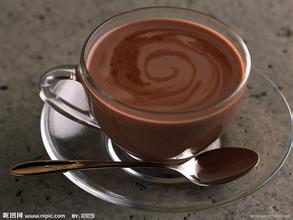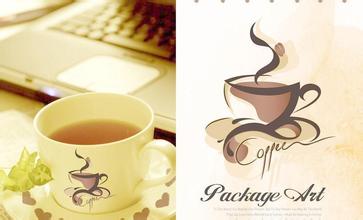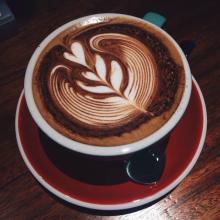Introduction to the method of taste treatment for the description of regional flavor of hand-made coffee beans
The grinding scale of hand-brewed coffee beans. The flavor description of the producing area. The taste treatment method.
1. Rough grinding: apply higher water temperature and fast flushing (about 2 minutes);
2. Medium grinding: Apply water temperature of about 85 and medium speed brewing (about 3 minutes);
3, fine grinding: suitable for lower water temperature, 75-80 degrees water temperature and slow brewing (more than 3 minutes) 1, because fresh beans contain a lot of carbon dioxide, so should choose a lower water temperature, such as between 80-82 degrees;
2. The sour and bitter beans in the medium baking are relatively balanced, so it is appropriate to choose about 85 degrees.
3, medium grinding, should choose about 85 degrees of water temperature, and medium speed brewing is appropriate;
4, I want to pursue the flavor: sour bitter balance.
Combine the above conditions: Stewing at 80-82 ° C, brewing at medium speed is most appropriate.
If one of the above conditions changes, the taste will also change.
If medium grinding becomes coarse grinding, if brewing at the original water temperature and speed, the sour taste will be strengthened and the bitter taste will be weakened; but if the fast brewing method is used, it will return to the sour and bitter balance, but the mellow degree is slightly weaker.
If it becomes finely ground and slowly brewed, it will weaken the sourness, strengthen the bitterness, and thicken the alcohol, becoming a typical European or American flavor.
There have been many people who have listed each kind of bean as a detailed table, explaining what kind of grinding degree and certain water temperature should be used for that kind of bean, and even taking it as the golden rule for hand-made drip coffee. This table has certain reference value as an understanding of beans and how to brew them, but I oppose adopting such a fixed thinking mode, because everyone's pursuit of brewing coffee will be different. Even the same kind of beans will have different roasting degrees. Different grinding degree, at the same time the degree of preservation is also the same, with the same water temperature brewing today's baked beans and stored for a week after the beans, in the taste will certainly have subtle changes and differences. In short, due to various factors are too complex and change more, a fixed table can not be applied in any case, even if the brewed coffee flavor you also like, it is only according to other people's imagination coffee flavor, their subjective initiative has not been fully developed, let alone achieve their own creation and innovation.
We all know that even roasted coffee beans are alive, and their interiors are constantly changing and moving. And that's why I think: Can't use mechanical, static, metaphysical concept to look at the problem of brewing coffee, should use dialectical approach to treat and deal with this problem, the best way is according to the specific situation of beans in your hand, and then according to the freshness of beans, roasting degree, grinding degree of the three most important factors, to determine the flavor of this cup of coffee you want to pursue, and in the pursuit of flavor is not limited to the above four typical, and then several factors for comprehensive analysis, Finally, determine the most suitable brewing water temperature to achieve.
By analyzing this, you are no longer a blind coffee beginner. You have become a purposeful, analytical, and aspiring coffee expert. If you think ahead and achieve your goal, this is definitely your most successful brewing method. Even if you fail, it doesn't matter. You can learn from your failures, make further modifications, and practice constantly. From this point of view, continuous practice, summary, re-practice, re-summary, your level of brewing coffee and understanding will be constantly improved, you will continue to enjoy the fun of life brought by coffee.

Important Notice :
前街咖啡 FrontStreet Coffee has moved to new addredd:
FrontStreet Coffee Address: 315,Donghua East Road,GuangZhou
Tel:020 38364473
- Prev

Standard steps for thickness calibration of hand-made coffee powder are graphically adjusted
Standard steps for the thickness scale of hand-made coffee powder Diagram regulating humidity factors not only play a role in sunny and rainy days, but also at different times of the day. Generally speaking, the humidity in the morning and evening is higher than that at noon, so according to the influence of humidity factors, the grinding degree should be thickened in the morning and evening, and finer at noon. Factors affecting the degree of grinding
- Next

Effect of Coffee Powder thickness on Flavor-Coffee Powder Common Grinding thickness Diagram
The influence of coffee powder thickness on flavor-coffee powder common grinding thickness diagram French filter kettle, plug air, drip filter or mocha pot do not require high fineness of coffee powder. Knife milk grinder (commonly known as bean chopper or propeller grinder) can not adjust the scale, but to adjust the size of coffee powder according to the length of time, the size of coffee powder is uneven, so it is not suitable for making espresso. It is generally thought that as long as there is one
Related
- Beginners will see the "Coffee pull flower" guide!
- What is the difference between ice blog purified milk and ordinary milk coffee?
- Why is the Philippines the largest producer of crops in Liberia?
- For coffee extraction, should the fine powder be retained?
- How does extracted espresso fill pressed powder? How much strength does it take to press the powder?
- How to make jasmine cold extract coffee? Is the jasmine + latte good?
- Will this little toy really make the coffee taste better? How does Lily Drip affect coffee extraction?
- Will the action of slapping the filter cup also affect coffee extraction?
- What's the difference between powder-to-water ratio and powder-to-liquid ratio?
- What is the Ethiopian local species? What does it have to do with Heirloom native species?

